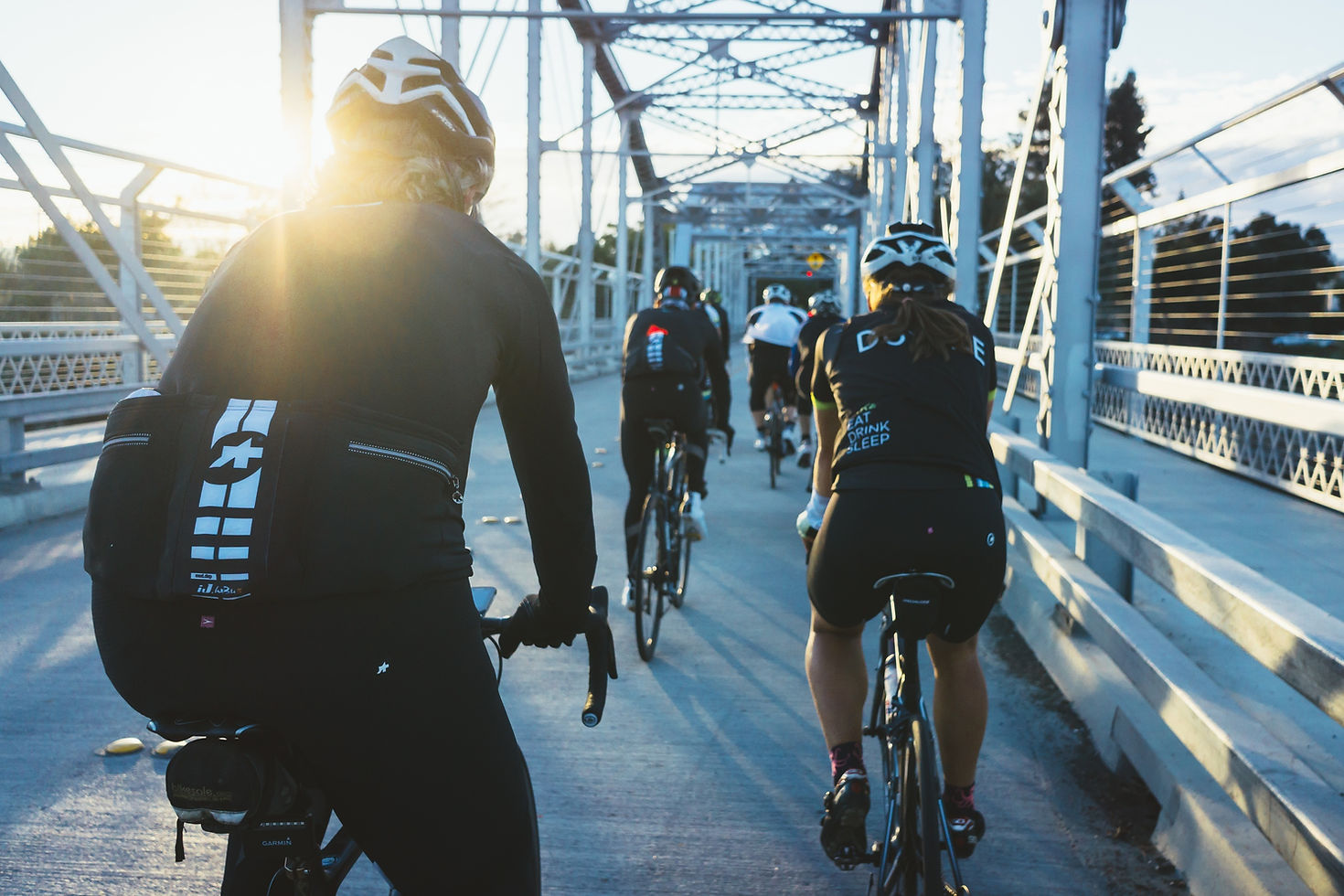
Tips for a pain-free ride
- Kirstie Tyson
- Jan 8
- 2 min read
Understanding and Managing Neck Pain from Cycling
Cycling is an excellent way to stay active and enjoy the outdoors, but it places unique demands on your body, particularly your spine and muscles. The forward-leaning posture and the need to hold your head up for long periods can often result in neck discomfort or pain. This is usually caused by poor posture, weak supporting muscles, and limited flexibility.
Why Neck Pain Happens
Your neck relies on deep stabilising muscles, known as the deep neck flexors, to support your head and maintain proper alignment. When these muscles are weak or tire quickly, the trapezius muscle—extending from the base of your skull to your shoulders—steps in to compensate. Over time, this overcompensation can lead to tension, fatigue, and pain in the neck and shoulders.
You might also subconsciously tense your neck and upper back when cycling. This can occur if you're navigating uneven terrain, riding at high speeds, or using poor technique that causes excessive movement in your pelvis and lower trunk. These factors can result in muscle fatigue, spasms, stiffness, and painful trigger points.
Managing and Treating Neck Pain
Effective management of cycling-related neck pain involves a combination of manual therapy, targeted exercises, and adjustments to your riding technique.
- Manual Therapy: Techniques like joint mobilisation and soft tissue release help reduce pain and stiffness in the cervical spine and surrounding muscles.
- Massage: Targeted massage can relieve muscle spasms and release tight areas.
- Dry Needling: This may also be an effective option for reducing tension and pain.
- Strengthening and Stretching Exercises: Your physiotherapist can prescribe exercises tailored to you, including stretches to maintain flexibility and strengthening movements to target your deep neck flexors. Chin tucks are common examples.
Because everyone’s body is different, it’s best to consult your physiotherapist for personalised advice. They’ll consider factors like past injuries or other conditions that might complicate your neck pain.
Preventing Neck Pain
Body Conditioning
Your neck muscles work in harmony with the stabilisers around your shoulder blades, including the middle and lower trapezius and the serratus anterior. Strengthening these muscles can reduce the strain on your upper traps and neck. Exercises like rowing movements, push-ups, and resistance band activities are excellent options. Incorporating Swiss ball exercises can also improve strength and stability.
Your physiotherapist can design a rehabilitation program to help you manage or prevent neck pain. They can also offer guidance on improving your posture during daily activities like sitting at a desk, driving, or lifting. Small ergonomic adjustments can make a big difference in reducing neck strain.
Bike Set-Up
Proper bike setup is essential to minimise strain on your neck. If you’re stretching too far forward or your handlebars are too low, consider shortening the stem or raising the bars to achieve a more upright posture. Regularly change your hand positions on the handlebars and take breaks to sit up and stretch. This will help distribute the load across different muscle groups and ease strain on your neck and back.
Enjoy the Ride
With the right approach, you can prevent or manage neck pain and continue enjoying your time on the bike. If you’re experiencing persistent discomfort, the team at **SurfEdge Physiotherapy** can provide expert advice, tailored exercises, and hands-on treatment to keep you riding pain-free.
Happy cycling!



Comments